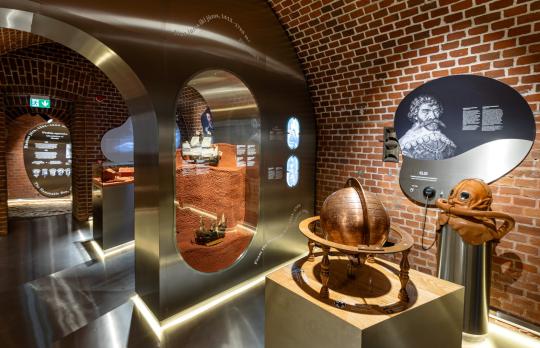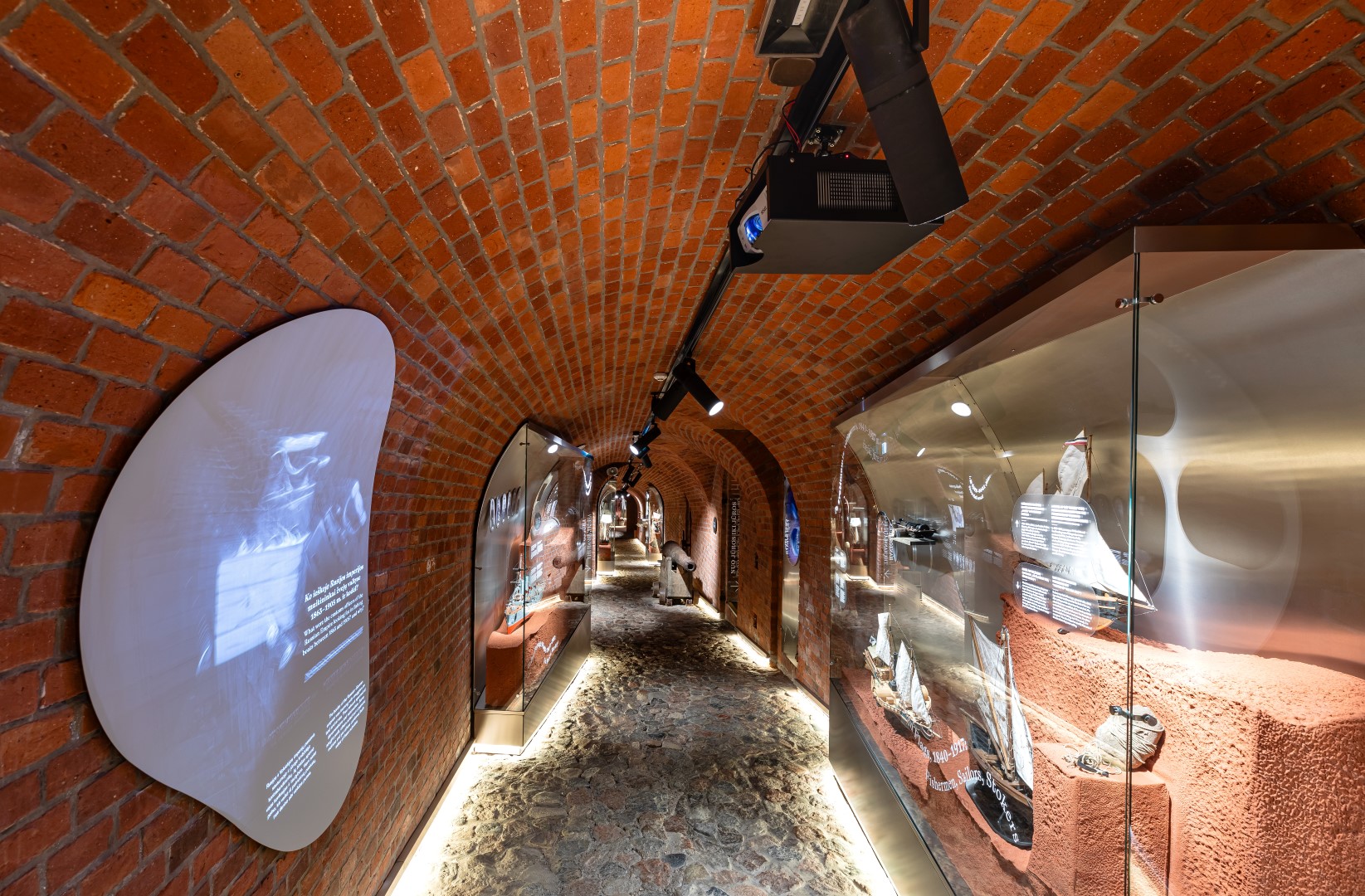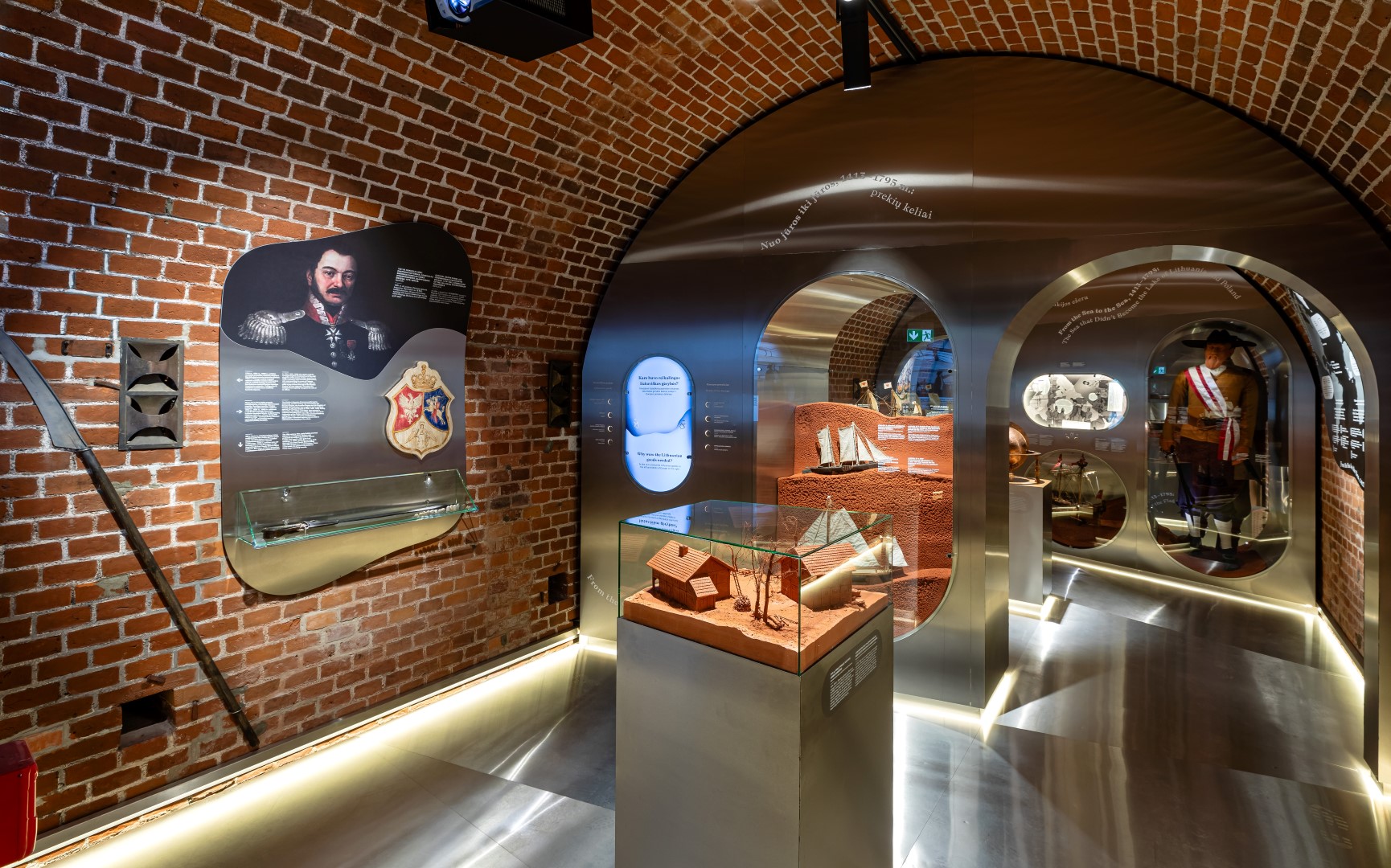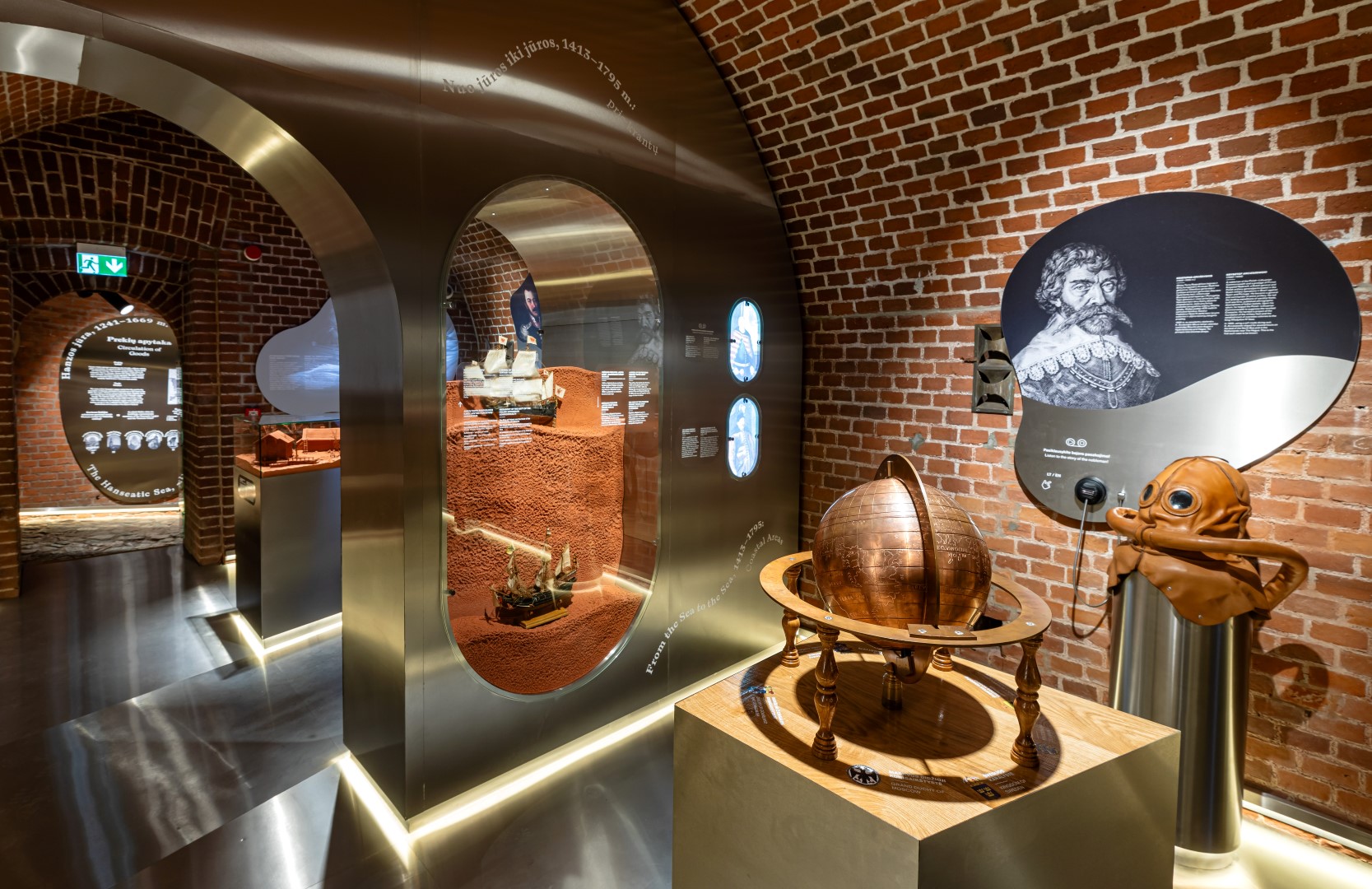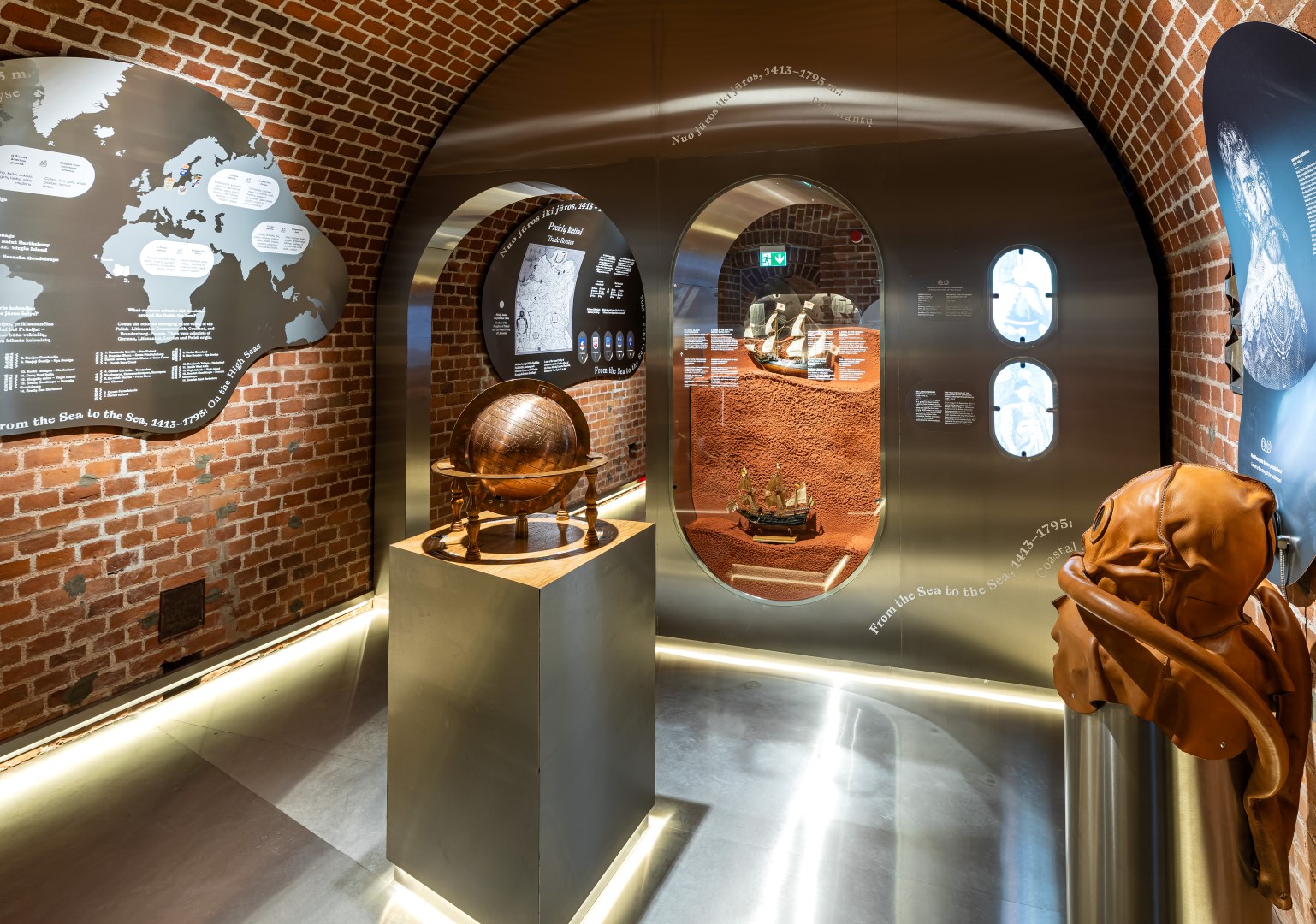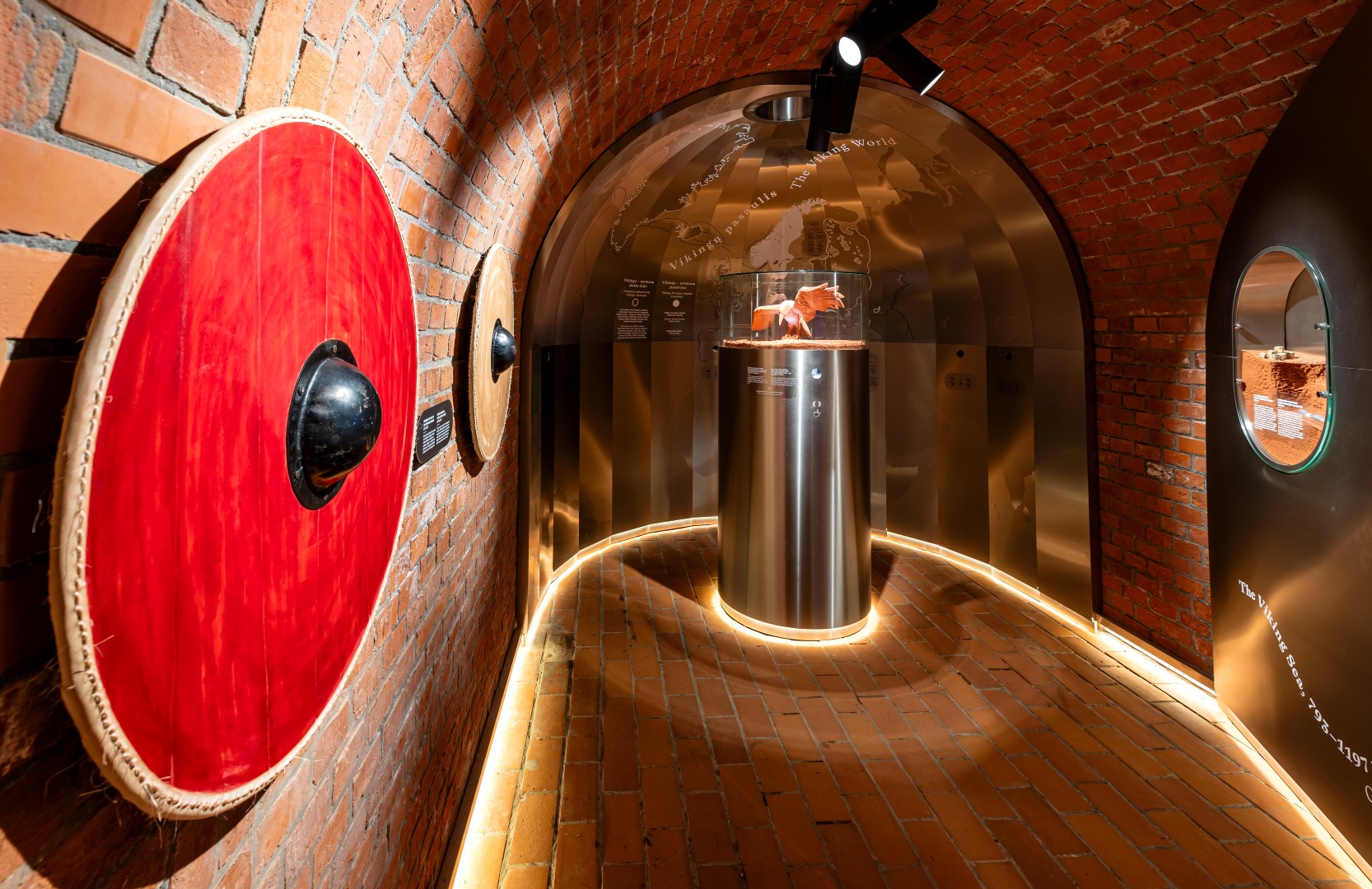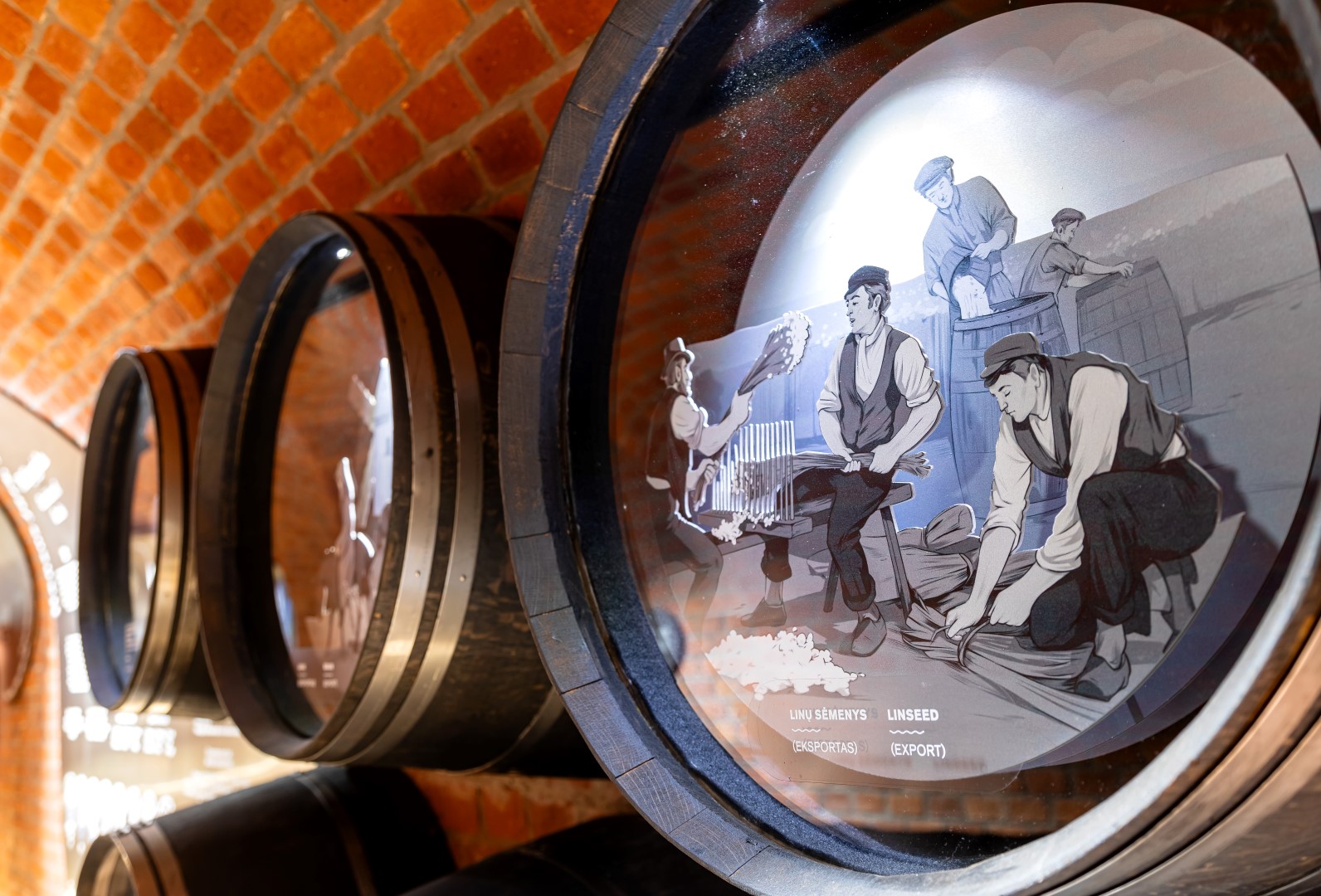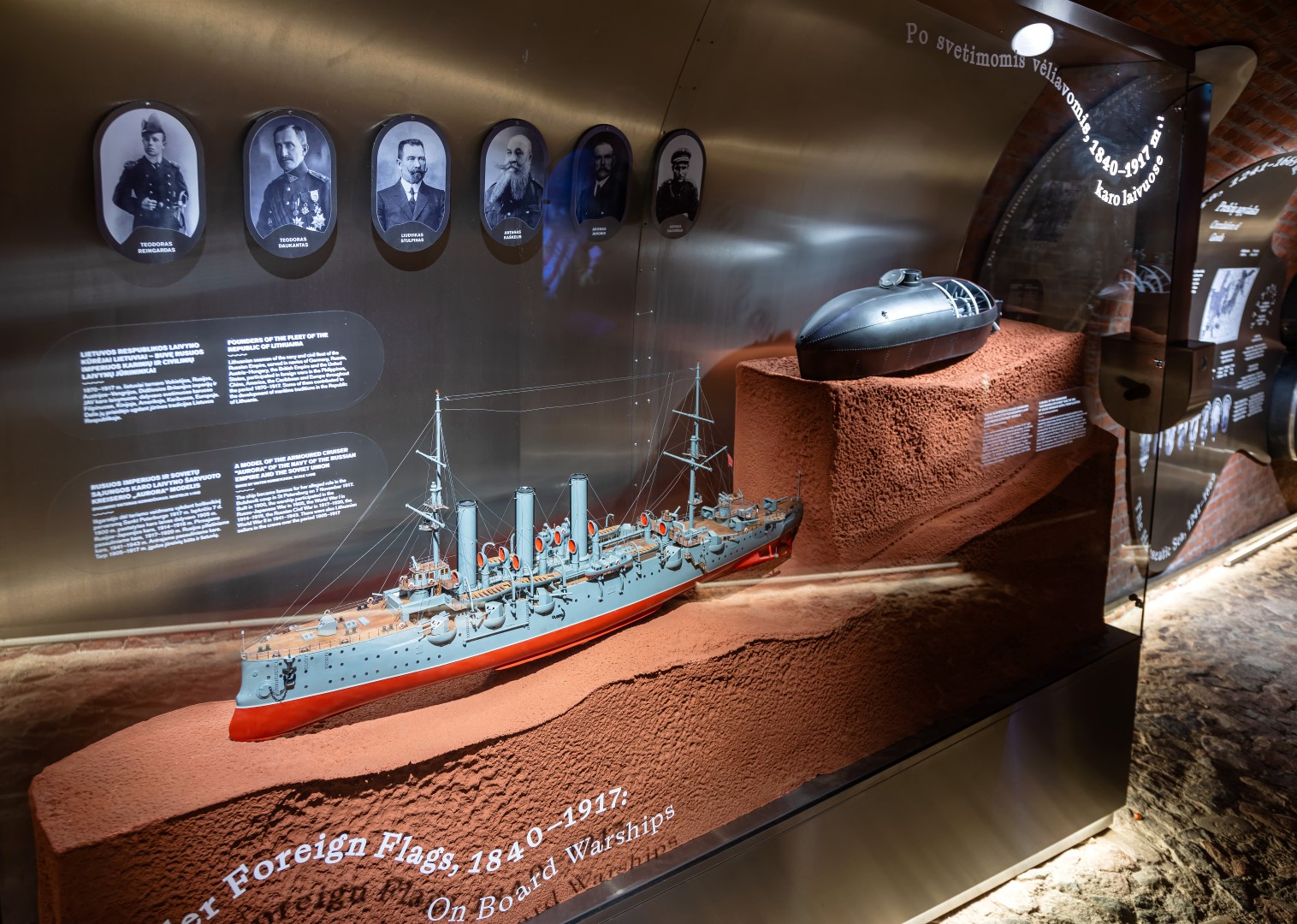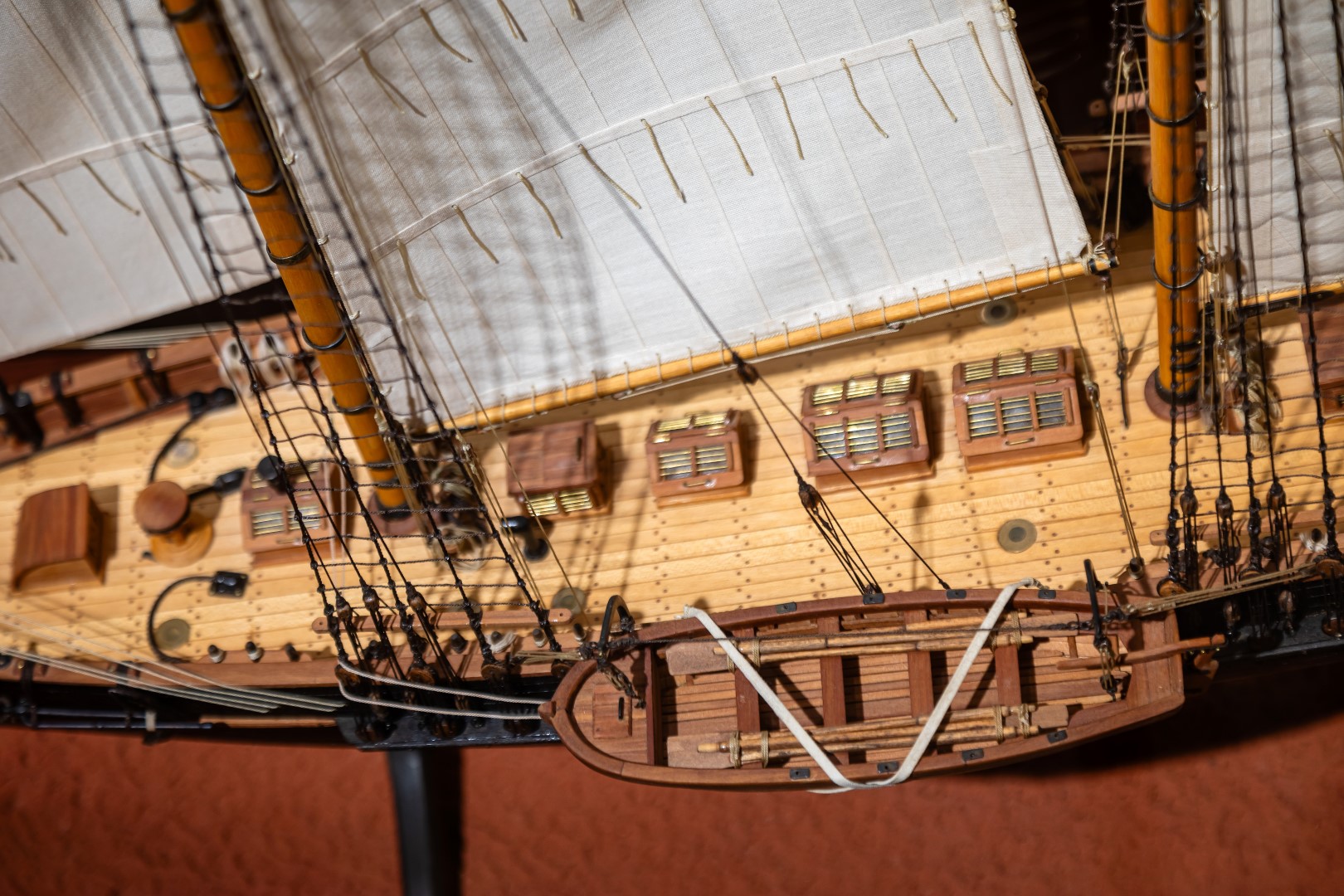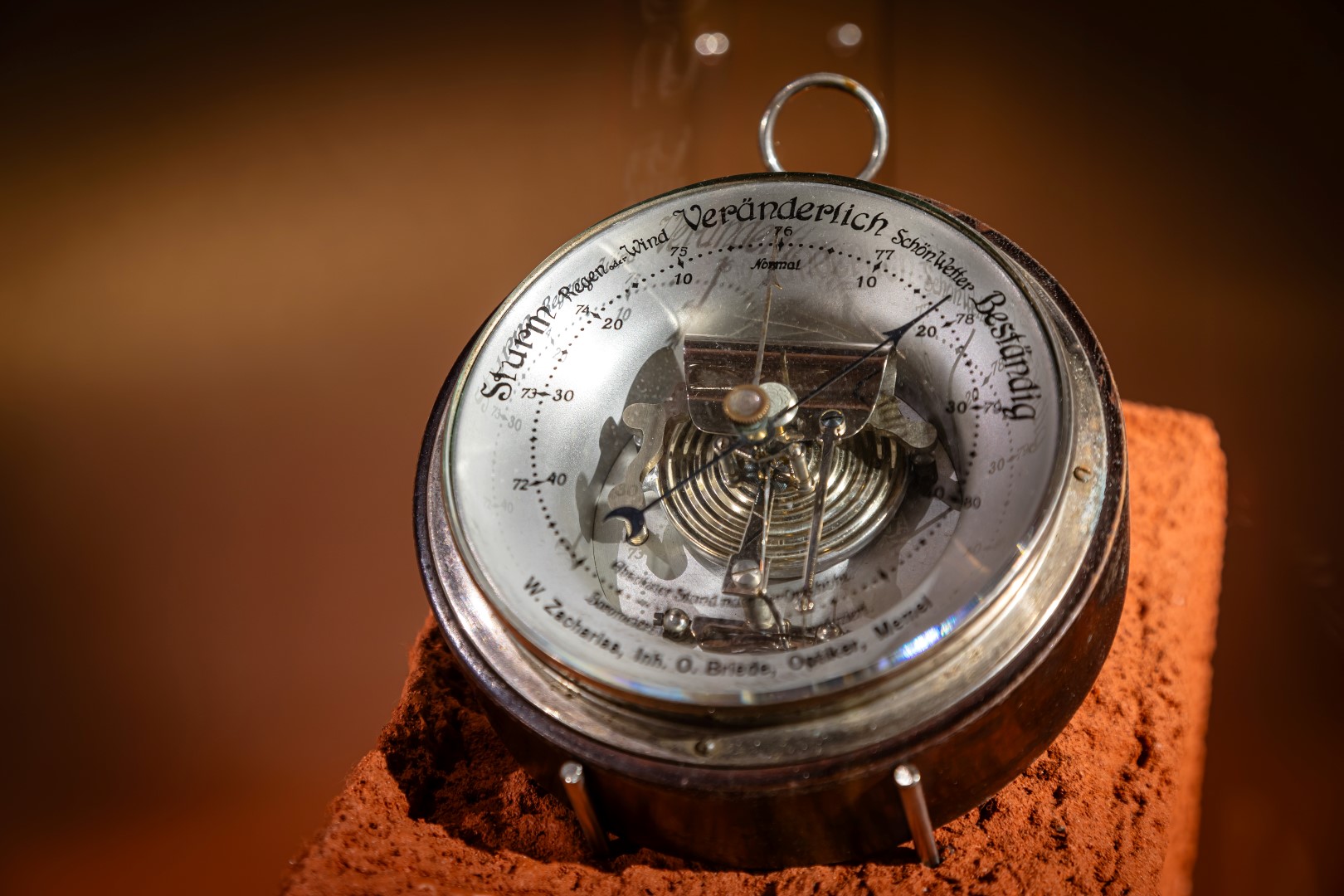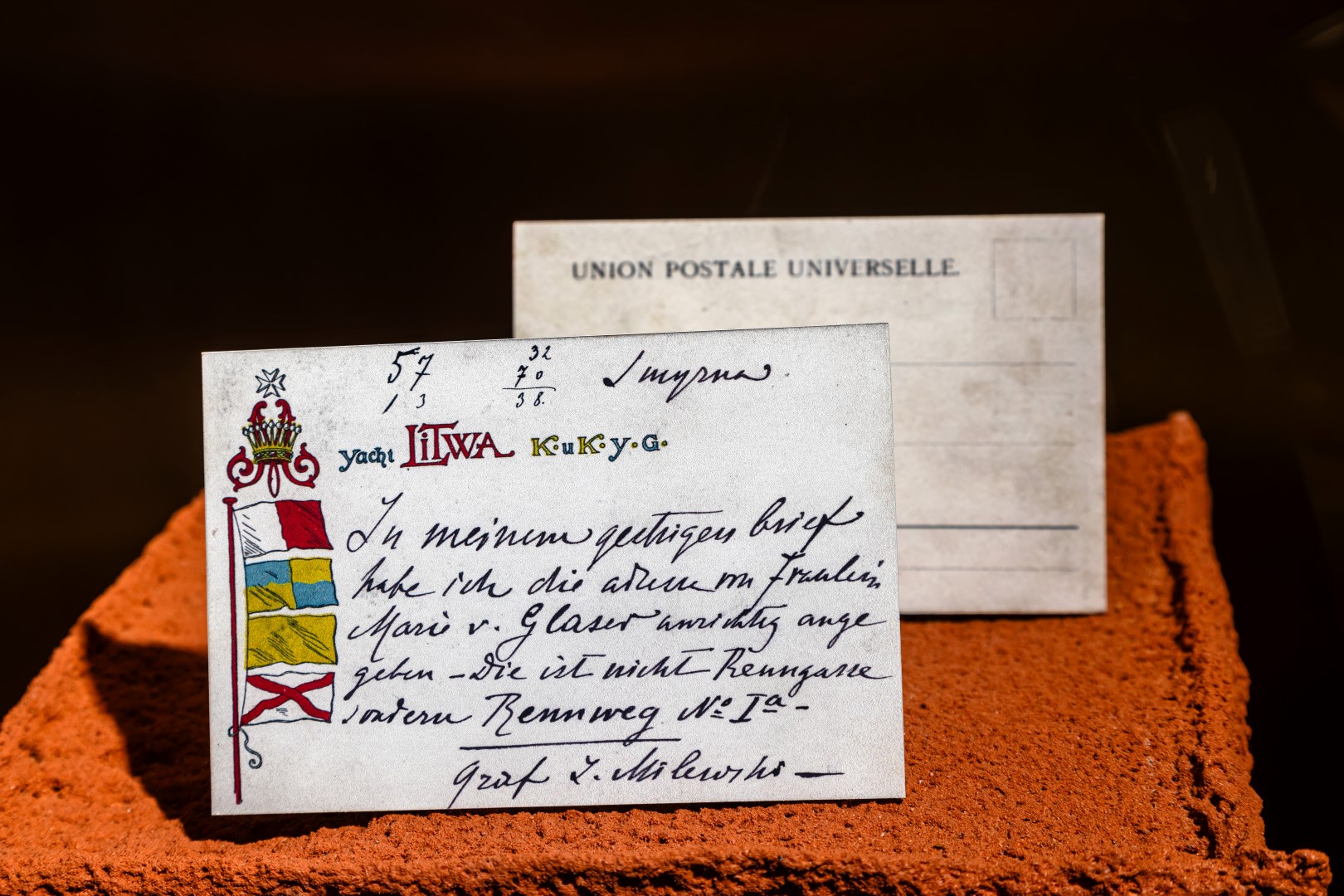The exposition truly covers a period of almost a thousand years, collecting and presenting episodes of maritime history, reflecting the experiences of lands and tribes or peoples associated with Lithuania.
According to the historian, until the 20th century, both the circumstances and the mentality of the society were not favourable for the creation of a maritime identity of Lithuania.
- In the past, there were only sporadic maritime episodes, efforts to break out of the land,– says Dr Dainius Elertas. – However, little-known pages of history can serve as a source of inspiration for strengthening the features of a maritime state in the present.
The exhibition is located in the authentic caponier of the Nerja Sea Fort, which descends from the courtyard down to the moat. The room is small and ungrateful for the exhibition, especially as it was essential not to damage the heritage features. However, the creators of the exhibition successfully overcame this challenge and used the inconvenience as a reinforcing means of expression.
The story begins in 1918 and, as the chaplain's narrative deepens, it seems natural to go deeper into the depths of history, through the reign of Tsarist Russia, the Grand Duchy of Lithuania, the Baroque, the Renaissance, to the Middle Ages and the Viking Age. Intriguing tales of the Viking Age and battles are told, as the Curonians, Semigallians, Sclavs and Sembians fought, traded and participated in the battles in the northern and western fringes of the territory of present-day Lithuania in the 8th and 13th centuries. The last Baltic Viking-Kurs were engaged in piracy as early as the 13th century.
In the 15th and 18th centuries, the Grand Duchy of Lithuania provided forestry and agricultural products for the Western European market. Lithuanian grain, beef, fibre and timber ensured the development of the great cities, the great geographical discoveries and the great industrial revolution.
In the 19th century, the sea discovered Lithuanians in other countries - the Kingdom of Prussia/German Empire and the Russian Empire. Seaside inhabitants fished at sea and served in the navies of other countries. The joys of rowing and sailing were experienced while flying foreign flags.

